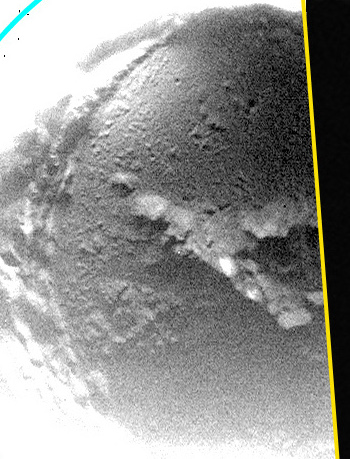Mars Reconnaissance Orbiter photographs Comet Siding Spring
During Comet Siding Spring’s flyby of Mars on Sunday Mars Reconnaissance Orbiter was able to capture an image of the comet’s nucleus.
Prior to its arrival near Mars astronomers estimated the nucleus or comet’s core diameter at around 0.6 mile (1 km). Based on these images, where the brightest feature is only 2-3 pixels across, its true size is shy of 1/3 mile or 0.5 km.
During Comet Siding Spring’s flyby of Mars on Sunday Mars Reconnaissance Orbiter was able to capture an image of the comet’s nucleus.
Prior to its arrival near Mars astronomers estimated the nucleus or comet’s core diameter at around 0.6 mile (1 km). Based on these images, where the brightest feature is only 2-3 pixels across, its true size is shy of 1/3 mile or 0.5 km.


